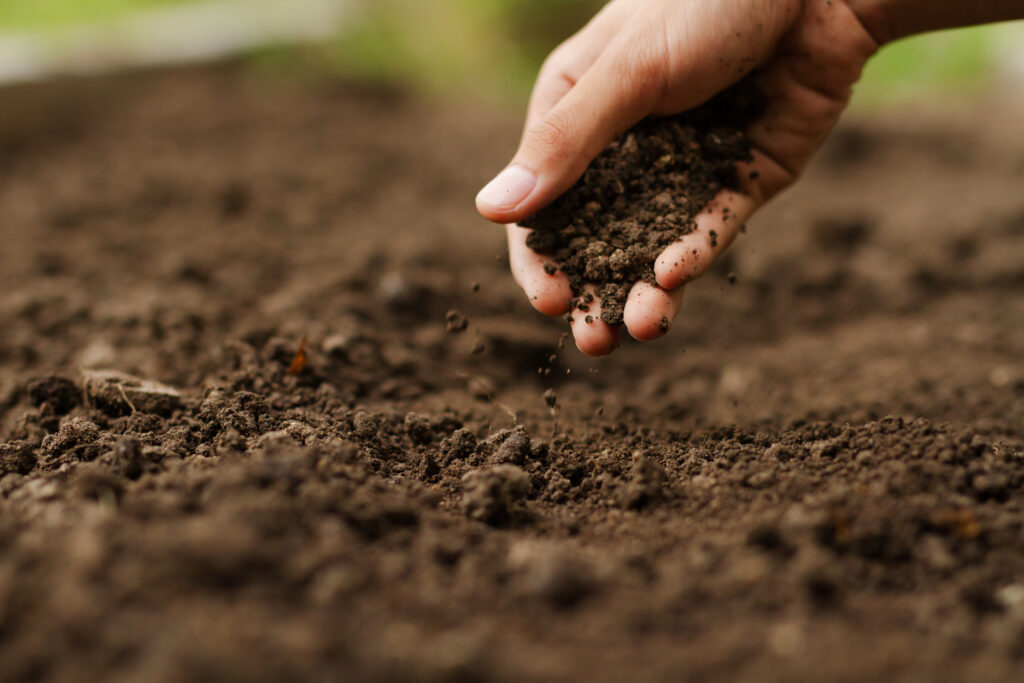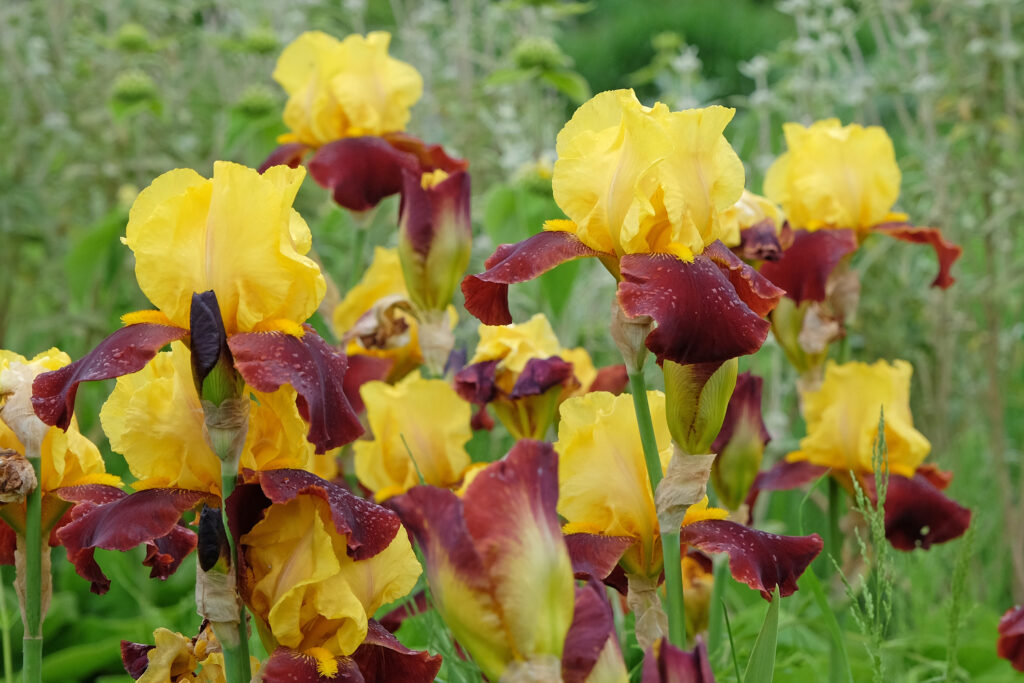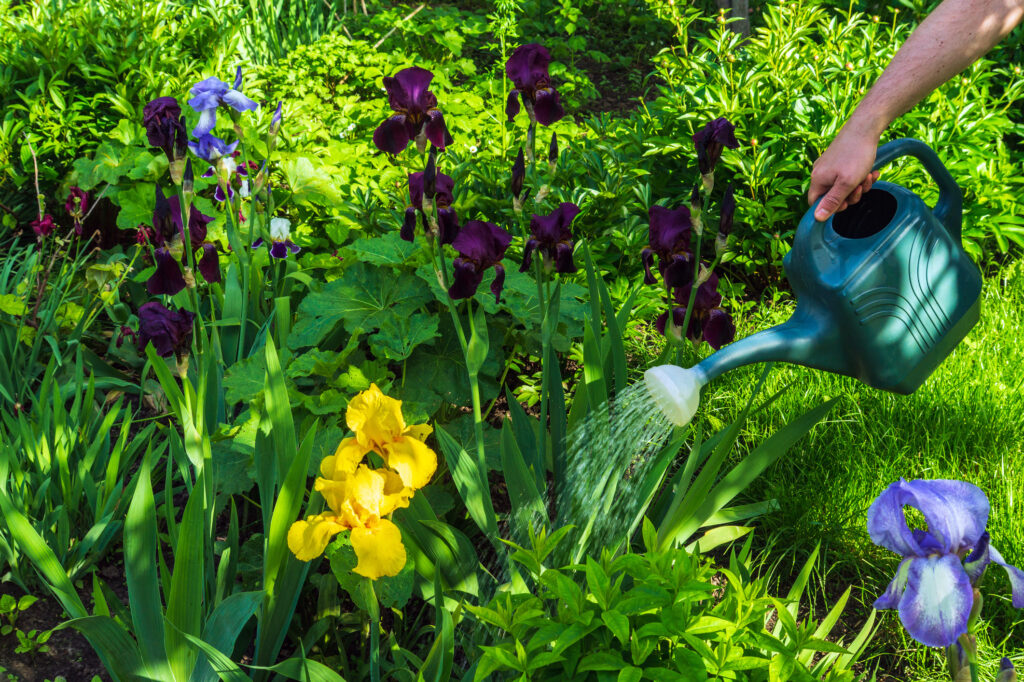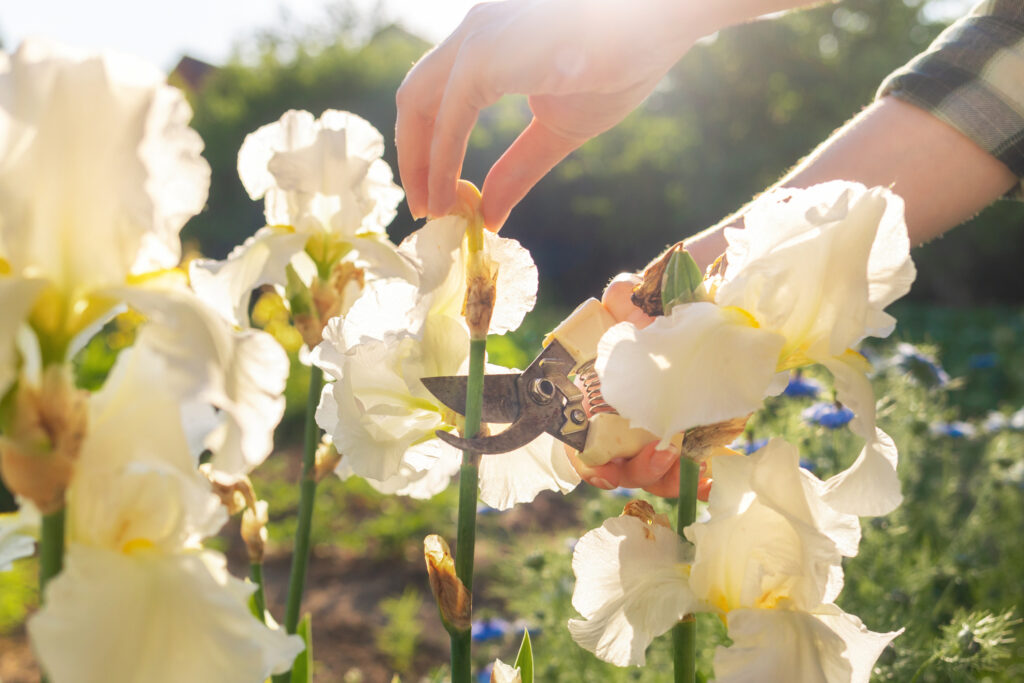
Irises are easy-to-grow flowers and require minimal maintenance. These perennials are a gardener’s delight and are known for their vibrant hues and intricate patterns. Here are five essential tips to ensure your iris bulbs flourish:
When & Where To Plant

- Timing: Plant Irises in late summer to early fall. This will allow them to establish roots before winter.
- Location: Select a sunny spot where the Irises will receive at least 6-8 hours of direct sunlight daily. Ensure the soil is well-draining to prevent waterlogging, which can cause root rot.
Preparing The Soil

- Soil Quality: Irises prefer slightly acidic to neutral pH levels (6.0-7.0). Amend heavy clay or sandy soils with organic matter such as compost to improve texture and fertility.
- Drainage: Enhance drainage by planting Irises on a slope or raised beds. This helps prevent excess moisture around the roots.
Planting Depth & Spacing

- Depth: Plant Irises shallowly. The rhizomes (bulbs) tops should be just below the soil surface, with the roots spread out underneath.
- Spacing: Space the bulbs 12-18 inches apart to allow for adequate air circulation and future growth. Overcrowding can lead to disease and reduced blooming.
Watering & Mulching

- Watering: After planting, water the bulbs thoroughly to help them settle in. During the growing season, water the Irises regularly but avoid overwatering. Allow the soil to dry out between waterings.
- Mulching: Apply a light layer of mulch around the bulbs to retain moisture and suppress weeds. Be careful not to cover the rhizomes completely, as they need some exposure to sunlight and air.
Iris Maintenance & Care

- Fertilizing: Feed Irises with a balanced, low-nitrogen fertilizer in early spring and again after flowering. Avoid high-nitrogen fertilizers, as they can promote foliage growth at the expense of blooms.
- Pruning: Remove spent flowers to encourage more blooms and prevent seed formation. In the fall, trim back the foliage to a few inches above the ground to prepare the plants for winter.

By following these tips, you’ll create the ideal conditions for your Irises to thrive, rewarding you with their beautiful blooms year after year.
Other Recommended Reading

- Iris Growing Guide
- New 2024 Summer/Fall Garden Catalog Review
- Tips For Gardening Success: Healthy Soil
- 11 Drought-Tolerant Perennials For Your Summer Garden
- Late Bloomers: Keeping Landscapes in Color

At Jung Seed Co, we strive to be your go-to guide for all your gardening needs. Our YouTube channel, The Garden Doctor by Dick Zondag, is where he provides gardening tips for all levels of gardeners. When you need reliable gardening advice, turn to the trusted experts at Jung.
View our new catalog online or browse our website for your gardening favorites. Sign up for our weekly email to receive info on new products, exclusive deals, and specials. Join our Facebook page to discuss all things gardening!